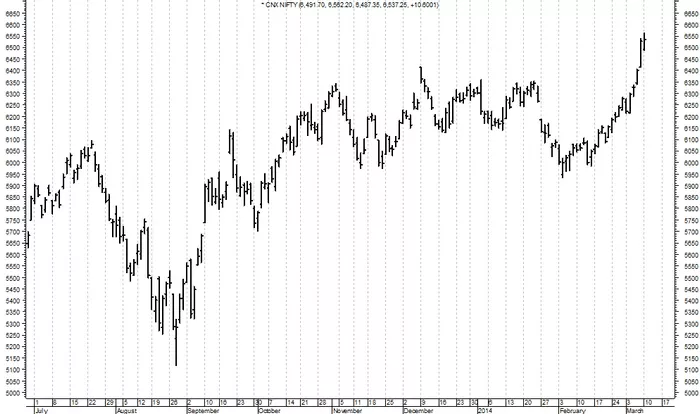Investing in the stock market can be a lucrative endeavor, but understanding the different types of stocks is crucial for making informed decisions. Two primary types of stocks that investors can choose from are preferred stock and common stock. Each type of stock has its own set of characteristics, benefits, and risks. In this article, we will delve into the key differences between preferred stock and common stock, helping investors understand which might be better suited for their investment goals.
Understanding Common Stock
Common stock represents ownership in a company and entitles shareholders to a portion of the company’s profits and assets. It is the most prevalent type of stock that companies issue and is typically what people refer to when they talk about investing in stocks.
Ownership and Voting Rights
One of the defining features of common stock is that it provides shareholders with voting rights. These rights allow shareholders to vote on important corporate matters, such as electing the board of directors and approving mergers or acquisitions. Each share of common stock usually grants one vote, giving shareholders a voice in the company’s governance.
Dividends
Common stockholders may receive dividends, which are payments made by the company to its shareholders out of its profits. However, dividend payments on common stock are not guaranteed and can fluctuate based on the company’s financial performance and decisions made by its board of directors. Companies are not obligated to pay dividends, and they may choose to reinvest profits back into the business instead.
Capital Appreciation
Investors in common stock primarily seek capital appreciation. This means that they hope the value of their shares will increase over time, allowing them to sell the shares at a higher price than they paid. The potential for capital appreciation is one of the key attractions of common stock, but it also comes with higher volatility and risk compared to other types of investments.
Risks of Common Stock
Common stock is subject to market fluctuations, and its value can rise or fall based on various factors, including the company’s performance, industry trends, and overall market conditions. Additionally, in the event of a company’s liquidation or bankruptcy, common shareholders are last in line to receive any remaining assets after all debts and obligations have been paid. This means that common stockholders may receive little to no compensation if the company fails.
See Also: 7 Ways To Learn How Cash App Stock Works
Understanding Preferred Stock
Preferred stock is another type of equity ownership in a company, but it differs from common stock in several significant ways. Preferred stockholders have a higher claim on the company’s assets and earnings than common stockholders, but this comes with some trade-offs.
Priority in Dividends
One of the main advantages of preferred stock is that it typically comes with fixed dividend payments. Preferred shareholders receive dividends before common shareholders, and these payments are often set at a fixed rate. This makes preferred stock similar to a fixed-income investment, providing a steady income stream for investors.
No Voting Rights
Unlike common stockholders, preferred stockholders usually do not have voting rights. This means they do not have a say in the company’s governance or in decisions that require shareholder approval. This lack of voting power is one of the trade-offs for the higher claim on assets and earnings.
Convertible Preferred Stock
Some preferred stock can be converted into a specified number of common shares, offering investors the potential for capital appreciation. This type of preferred stock is known as convertible preferred stock. The conversion ratio and terms are typically outlined at the time of issuance, providing a potential upside if the company’s common stock performs well.
Callable Preferred Stock
Callable preferred stock gives the issuing company the right to repurchase the stock at a predetermined price after a certain date. This feature allows companies to retire preferred stock and reduce their dividend obligations if they choose to do so. For investors, callable preferred stock can be advantageous if the call price is higher than the market price, but it also introduces the risk of the stock being called away.
Risks of Preferred Stock
While preferred stock offers more stability in terms of dividend payments, it still carries certain risks. The fixed dividend payments can be less attractive during periods of rising interest rates, as investors may find higher yields elsewhere. Additionally, preferred stock is still subject to market fluctuations, and its value can be affected by changes in interest rates and the company’s financial health. In the event of a company’s liquidation, preferred shareholders have a higher claim on assets than common shareholders but are still behind debt holders.
Key Differences Between Preferred Stock and Common Stock
Ownership and Voting Rights
Common Stock: Provides ownership and voting rights.
Preferred Stock: Provides ownership but usually does not come with voting rights.
Dividends
Common Stock: Dividends are not guaranteed and can vary.
Preferred Stock: Dividends are typically fixed and paid before common stock dividends.
Capital Appreciation
Common Stock: Potential for higher capital appreciation but with higher risk.
Preferred Stock: Limited capital appreciation potential, with some exceptions like convertible preferred stock.
Priority in Liquidation
Common Stock: Last in line to receive assets in liquidation.
Preferred Stock: Higher claim on assets than common stock but behind debt holders.
Risk and Volatility
Common Stock: Higher risk and volatility.
Preferred Stock: Lower risk and volatility compared to common stock but still subject to market and interest rate risks.
Which is Better for Investors?
The choice between preferred stock and common stock depends on an investor’s goals, risk tolerance, and investment strategy. Here are some considerations to help determine which type of stock might be better suited for different investors:
For Income-Oriented Investors
Preferred stock may be more attractive for income-oriented investors who prioritize stable and predictable dividend payments. The fixed dividends provide a reliable income stream, making preferred stock similar to bonds in this regard. However, investors should be aware of the interest rate risk and the potential for callable preferred stock to be redeemed by the issuing company.
For Growth-Oriented Investors
Common stock is generally more suitable for growth-oriented investors who seek capital appreciation. The potential for significant price increases over time can lead to substantial returns. However, this comes with higher volatility and risk. Investors in common stock should be prepared for market fluctuations and the possibility of losing their investment if the company underperforms.
For Conservative Investors
Conservative investors who prioritize capital preservation and lower risk might prefer preferred stock. The stability of fixed dividend payments and the higher claim on assets in liquidation offer a safer investment compared to common stock. However, conservative investors should also consider the impact of interest rate changes on the value of preferred stock.
For Diversification
Both preferred and common stock can play a role in a diversified investment portfolio. Including both types of stock can help balance risk and return. For example, an investor might hold common stock for growth potential and preferred stock for income stability. Diversification can help mitigate the risks associated with each type of stock and provide a more balanced investment strategy.
Tax Considerations
When investing in stocks, it’s essential to consider the tax implications. Both common and preferred stock can generate taxable income, but the tax treatment may differ.
Dividends
Dividends from common and preferred stock are typically considered taxable income. However, qualified dividends, which meet specific criteria, may be taxed at a lower rate than ordinary income. It’s important for investors to understand the tax treatment of dividends and consult with a tax professional if needed.
Capital Gains
When selling stock at a profit, investors may be subject to capital gains tax. The rate depends on the holding period and the investor’s tax bracket. Long-term capital gains (for stocks held more than one year) are generally taxed at a lower rate than short-term capital gains.
Tax-Advantaged Accounts
Investors can hold common and preferred stock in tax-advantaged accounts, such as Individual Retirement Accounts (IRAs) and 401(k) plans, to potentially defer or reduce taxes on investment gains and income. Understanding the tax benefits and limitations of these accounts can help investors make more tax-efficient decisions.
Conclusion
Preferred stock and common stock each offer unique advantages and disadvantages, making them suitable for different types of investors. Common stock provides voting rights, potential for capital appreciation, and higher risk, making it attractive for growth-oriented investors. Preferred stock offers fixed dividends, lower risk, and priority in liquidation, appealing to income-oriented and conservative investors.
When deciding between preferred and common stock, investors should consider their financial goals, risk tolerance, and investment strategy. A diversified portfolio that includes both types of stock can help balance risk and return, providing a more comprehensive approach to investing.
Ultimately, understanding the differences between preferred stock and common stock is essential for making informed investment decisions. By carefully evaluating the characteristics and risks of each type of stock, investors can choose the investments that best align with their objectives and financial situation.
Related topics:






























